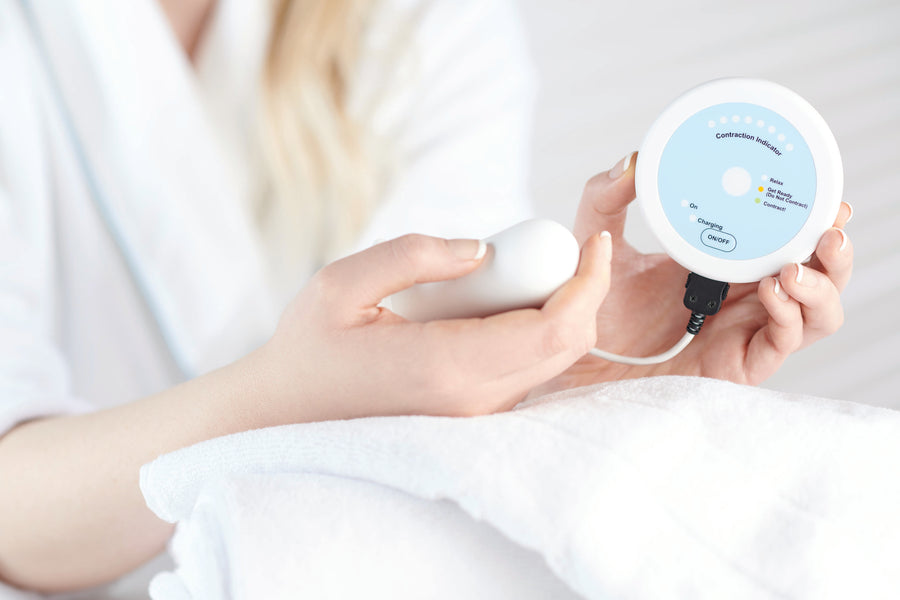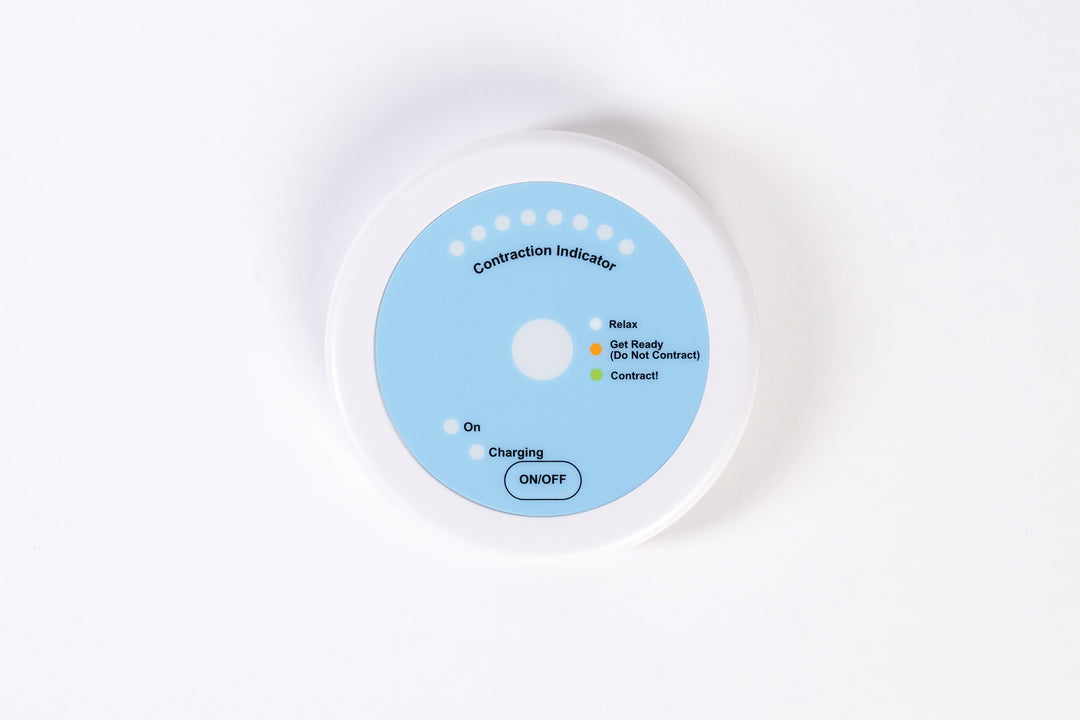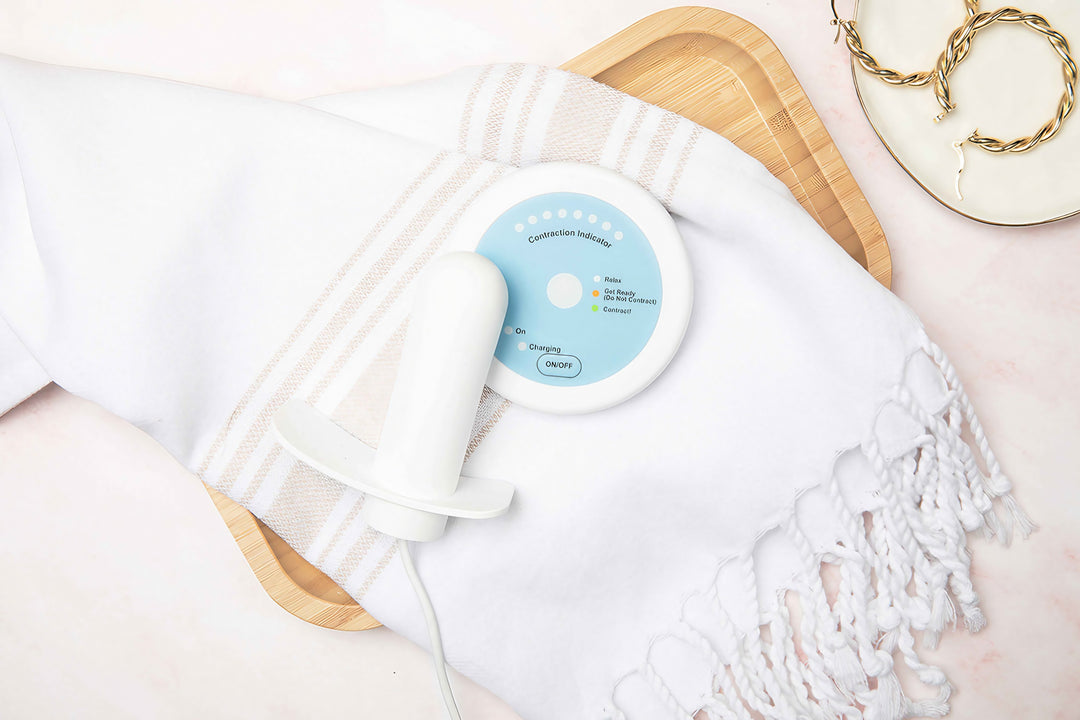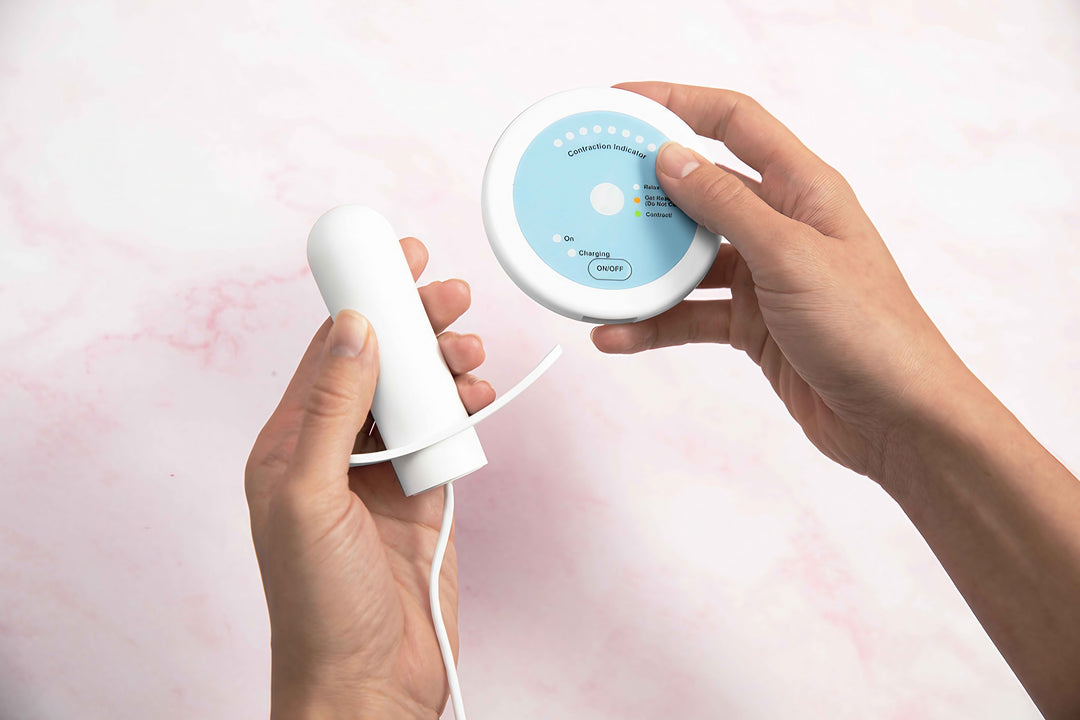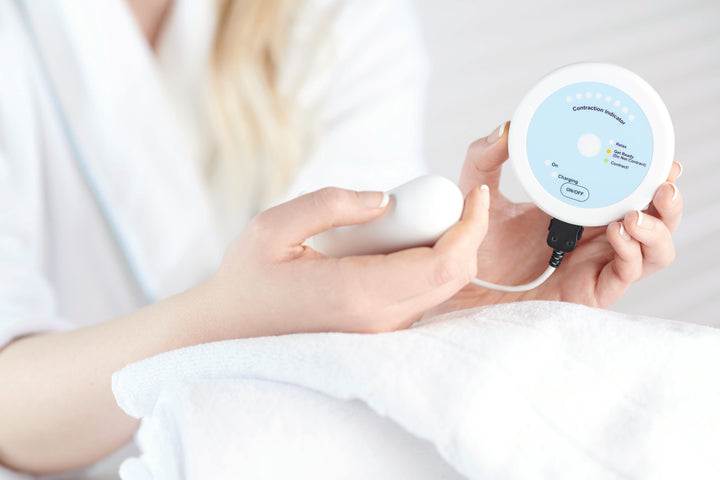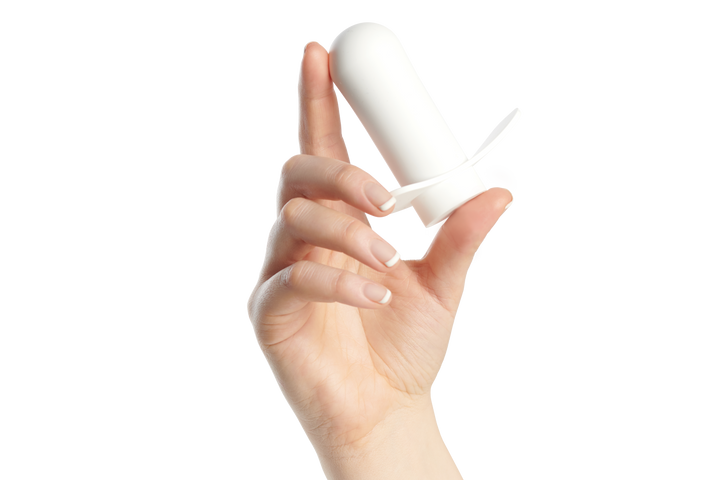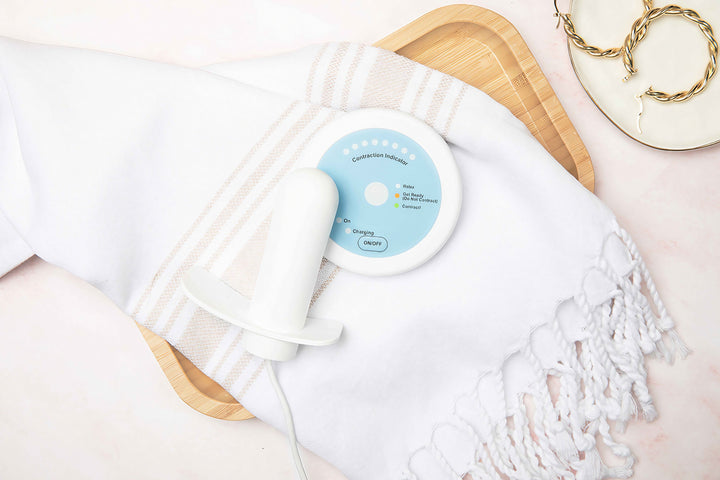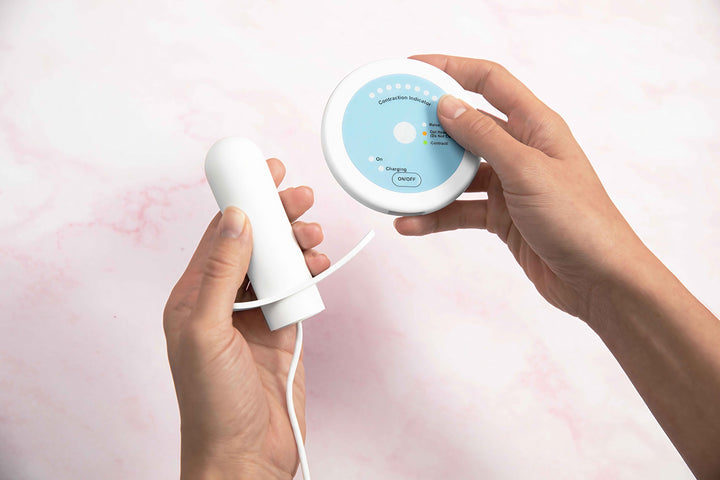How to do Kegels correctly and enhance results
Kegel exercises (also known as pelvic floor muscle exercises) have long been praised as the best exercise for pelvic floor health – strengthening these vital muscles and addressing stress urinary incontinence (SUI). These exercises can play a pivotal role in our overall well-being, affecting not only our core strength but also our sexual health, bladder control, and even our posture.
In this guide, we'll walk you through the fundamental steps of how to do Kegels correctly, ensuring you grasp the basics and feel confident in performing them properly. Moreover, we'll unveil the power of Flyte, an innovative pelvic floor device that supercharges your results, so you see results faster.
How to do a Proper Kegel
Step One
Start in any position that is comfortable for you, making sure it is a position you can relax into without clenching any other muscles. When learning how to do a Kegel, you might find it easiest to start in this position:

- Lie on your back.
- Place a firm pillow or yoga block under your hips to elevate them above shoulder height.
- Bend your knees and keep your feet flat on the ground.
Squeeze (contract) the same muscles that you use to stop the flow of urine and avoid passing gas. (Note: Do not try to stop your flow when you are actually going to the bathroom as that can lead to UTIs and change the way you naturally urinate.)
You can think of this squeeze like closing your lips on a straw.
Step Two
Lift your pelvic floor muscles upward and inward. You can think of this lift like sucking up a smoothie with a straw.
Aim to hold the lift of your pelvic floor muscles for 3-5 seconds. If this feels easy, hold for a little longer to further challenge your pelvic floor muscle strength and endurance. This can be extended up to 10 seconds if comfortable.
Step Three
Relax and release your pelvic floor muscles. Learning to let go of these muscles is just as important as learning to contract them. Optimal muscle control is being aware of BOTH contraction AND relaxation.
Remember to continue breathing and avoid tensing your stomach, legs, or butt.
Relax the muscles for 3-5 seconds or as long as you need to feel that you have fully let go of your pelvic floor muscles. Taking slow and intentional inhales and exhales into the lower belly will help reset and relax your muscles. Repeat Step 1, Step 2, and Step 3 10 times.
How many Kegels should you do a day?
This will depend on multiple factors including how weak your pelvic floor muscles are at baseline and your quality of contraction and relaxation. Performing Kegels up to three times a day can be helpful, however what is most important is quality over quantity. Take your time to focus on properly contracting and relaxing your pelvic floor muscles prior to increasing the number of repetitions or changing positions.
If you find you have a hard time with either contracting or relaxing, read To Kegel or Not to Kegel and consider seeing a pelvic floor physical therapist for further guidance. If you need help finding one, Flyte by Pelvital is ready and available to assist.
How to breathe when doing Kegels
We can make our Kegels more effective by breathing properly with a muscle called the diaphragm. Here’s what you need to know:
- Avoid holding your breath.
- Inhale slowly and intentionally into your belly and ribs during the resting portion of your Kegels. Imagine an umbrella opening or a balloon inflating within your abdomen, not just your chest. Inhaling helps to naturally relax and lengthen your pelvic floor before contracting. Relaxing is as important as contracting the pelvic floor muscles.
- Exhale slowly while squeezing and lifting your pelvic floor muscles. Once you have the squeeze and lift, aim to hold this contraction anywhere between 1 and 10 seconds while breathing normally. Then relax your pelvic floor muscles once again, rest, and take gentle breaths into your belly until your next contraction.
In addition to the steps we've outlined, we encourage you to watch the step-by-step Kegel exercise video tutorial below. Flyte by Pelvital on-staff pelvic floor physical therapist Leah Fulker, PT, DPT, PCES, breaks down how to do a Kegel in 2 simple steps with clear visual demonstrations.
Make the most out of Kegels with Flyte
When learning how to do Kegels correctly, focusing on quality over quantity is key. Without guidance, properly performing a Kegel can be a challenging task. Our FDA cleared, clinically proven pelvic floor device, Flyte, allows you to make the most of your Kegels. Flyte does this by ensuring higher quality Kegels, meaning less time feeling uncertain if what you are doing is effective and more time feeling confident you are treating the problem quickly and effectively.
Flyte has been shown in study to magnify the benefits of each Kegel by 39 times, ensuring quicker results. This innovative device strengthens and tones your pelvic floor muscles, addressing mild, moderate, or severe stress urinary incontinence (SUI), restoring continence and confidence. In a clinical trial, most women using Flyte were dry or near dry in 2 – 12 weeks.
To use Flyte, insert the medical-grade silicone wand into your vagina like you would a tampon. During Flyte’s treatment, the wand emits gentle mechanical vibrations while you perform your Kegels, impacting your pelvic floor muscles at a cellular level without discomfort. This treatment triggers a natural healing process, leading to a stronger pelvic floor and improved SUI symptoms.
For optimal results, use this pelvic floor tool for just 5 minutes daily over a six-week period — the standard recommended treatment time. Following this regimen, 82% of women in clinical trial were continent and the results were durable two years post-treatment. After six weeks, some women choose to use Flyte occasionally or as needed to maintain their progress.
Worried about the investment? Don't be. Flyte offers free shipping and is backed by a money-back guarantee. Flyte may be covered by your insurance; contact Flyte Customer Care for more information.
Real-Life Success with Flyte: Shelly's Story
We believe in the power of Flyte, and it's not just us singing its praises. Watch Shelly's testimonial, a real Flyte user, to see firsthand how Flyte has made a difference for her and could do the same for you.
Common questions about Kegels
Do Kegels really work?
- Kegels work for the right person when done correctly. When strengthening your pelvic floor muscles is appropriate to improve your symptoms, Kegels absolutely can and will work. The problem? Many perform them incorrectly, focusing on quantity over quality. We need to learn where the pelvic floor muscles are and how to properly engage them. Again, Kegels done for the right person really do work and the research supports this. Pelvic floor muscle training is considered first line treatment for women with all types of urinary incontinence.
What are the benefits of Kegels for women?
- Kegels are designed to strengthen the pelvic floor muscles. Similar to strengthening any other weakened muscle group that affects your life negatively, engaging in Kegel exercises can enhance bladder and bowel health, sexual well-being, and more. If you experience urinary incontinence with activity (exercise, running, jumping, laughing, coughing, sneezing, bending over, lifting objects off the floor), Kegels will likely help you regain better control of your urine leakage and alleviate symptoms.
Are there other kinds of Kegels I should be doing?
- Begin with simply focusing on performing a Kegel with good quality over quantity. This means a squeeze and a lift on the exhale, followed by a full relaxation of the muscles on the inhale.
- Once you are feeling more confident with the above, you can perform two different types of Kegel challenges: endurance holds and quick flicks.
- In our blog today, we went over endurance holds — holding your squeeze and lift for a few seconds before relaxing the pelvic floor muscles.
- Quick flicks are just like they sound — quick Kegel contractions. This helps to retrain your ability to swiftly engage your pelvic muscles when the need arises, such as when a sudden sneeze or cough hits. The technique for this type of contraction is the same as a regular Kegel but performed quicker. During quick flicks, remember to maintain normal breathing patterns.
How long do Kegels take to work?
- Results from Kegel exercises alone typically become noticeable within a few weeks to a few months. However, many women feel they are not making progress by doing Kegels alone, likely because they are not performing them properly or in the right positions. When you use Flyte, you can ensure higher quality Kegels, accelerate your progress, treat your pelvic floor muscles, and experience results in as little as 2 weeks.











